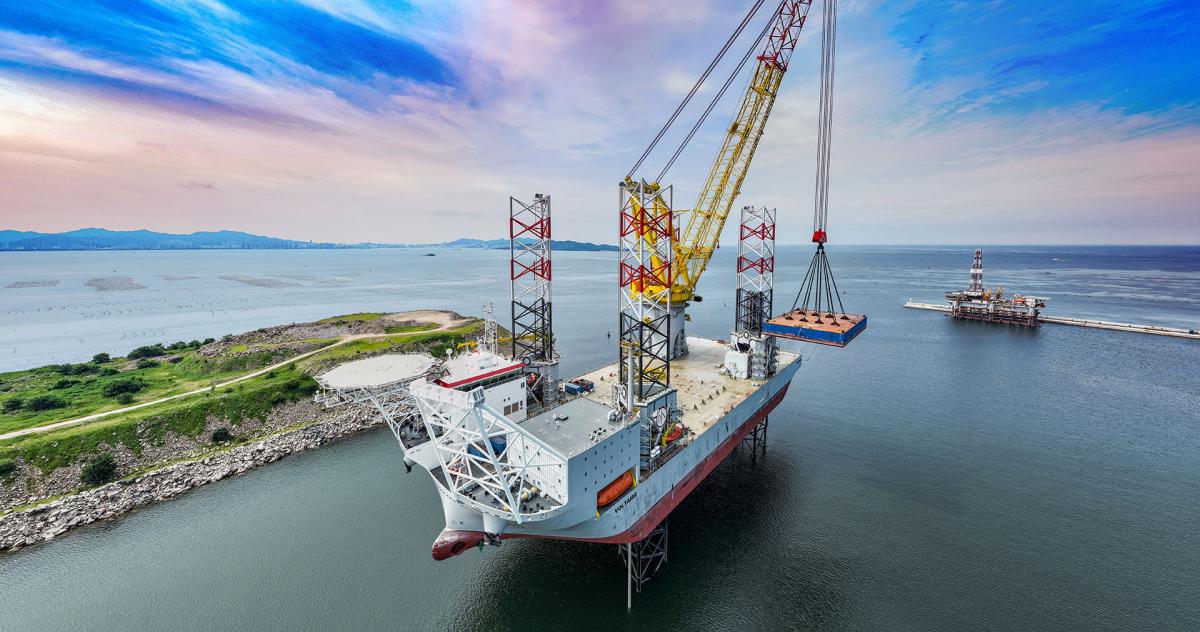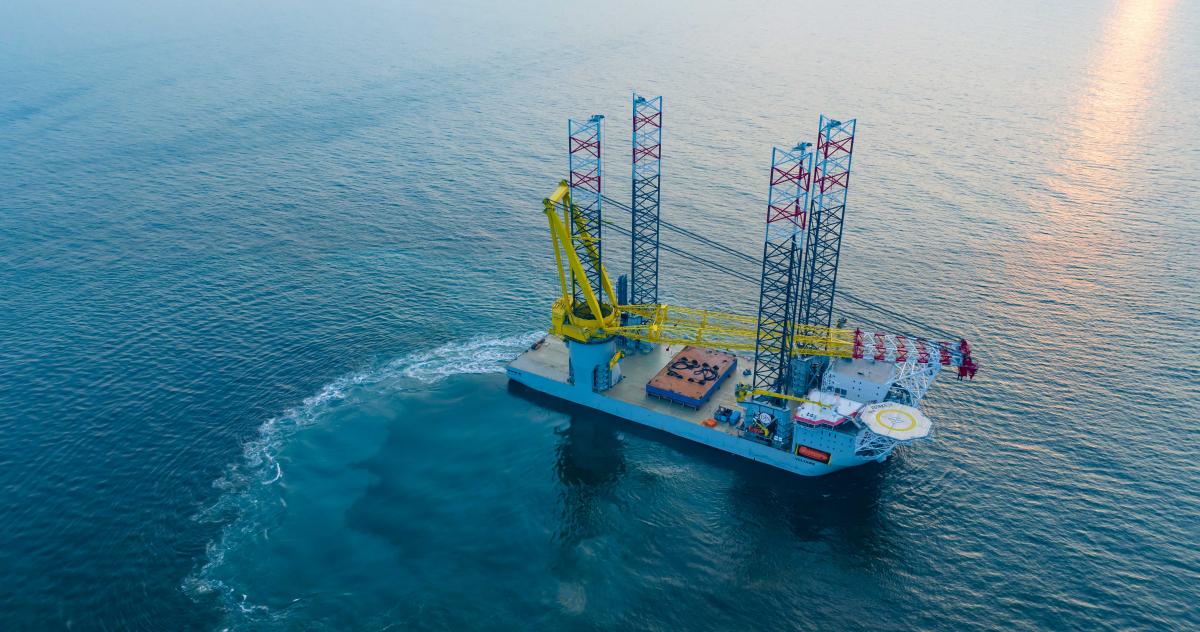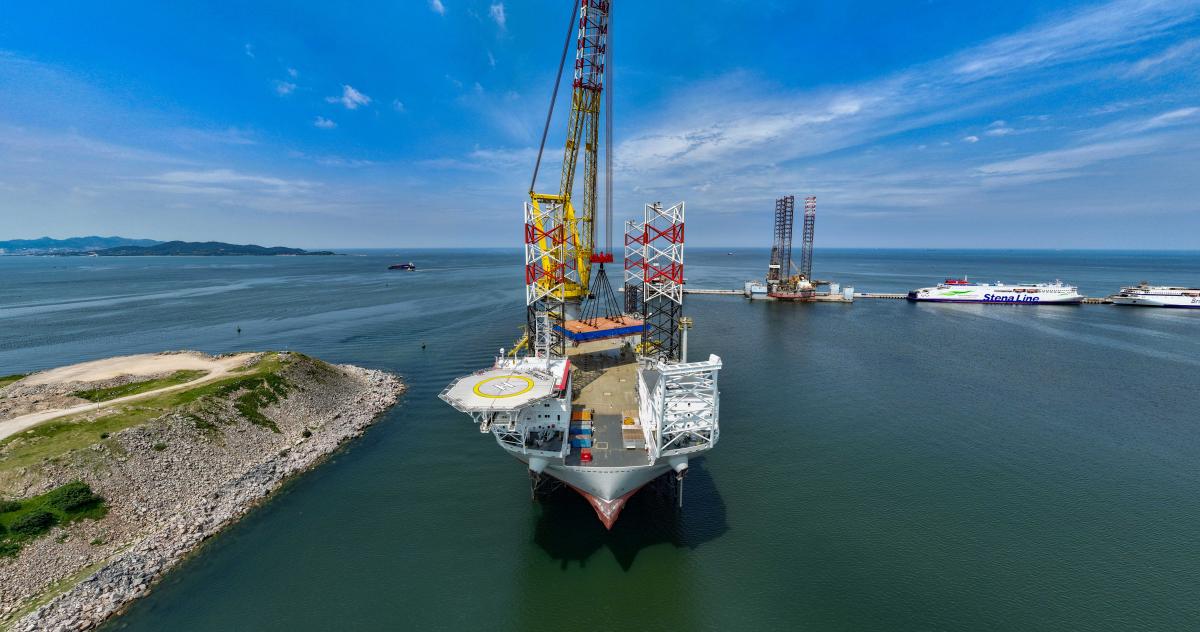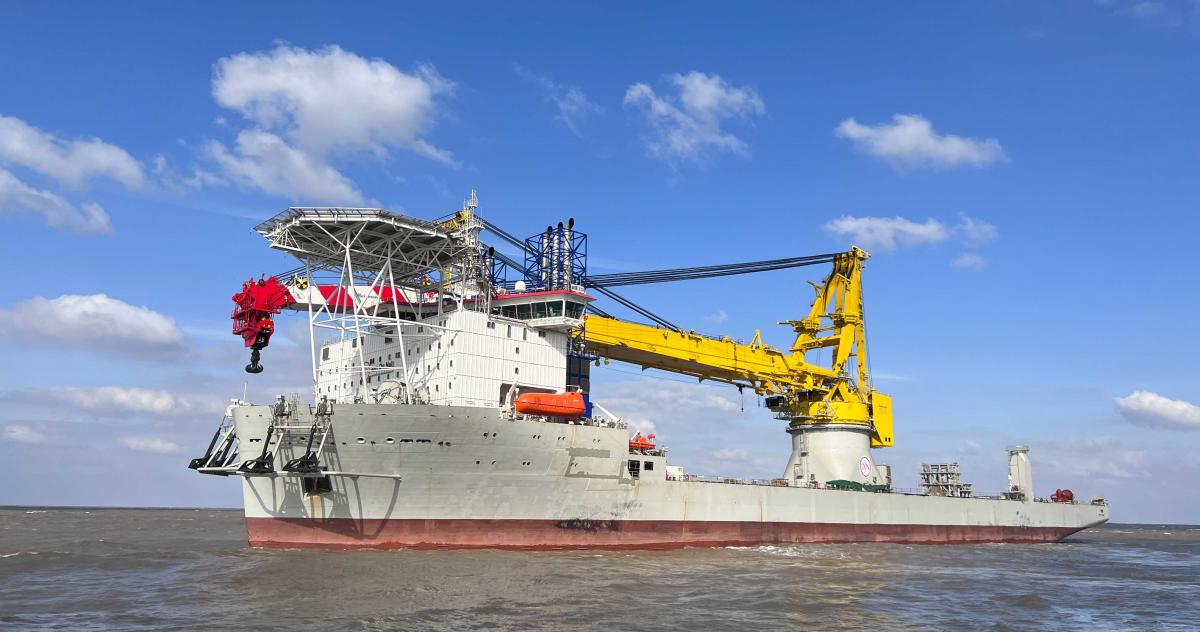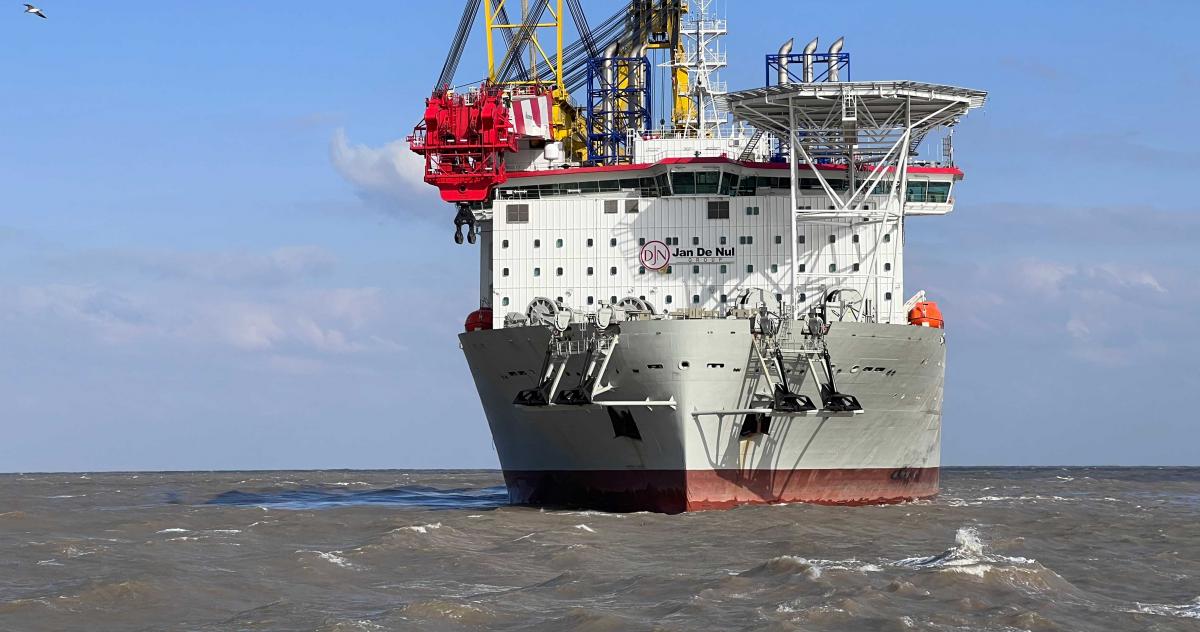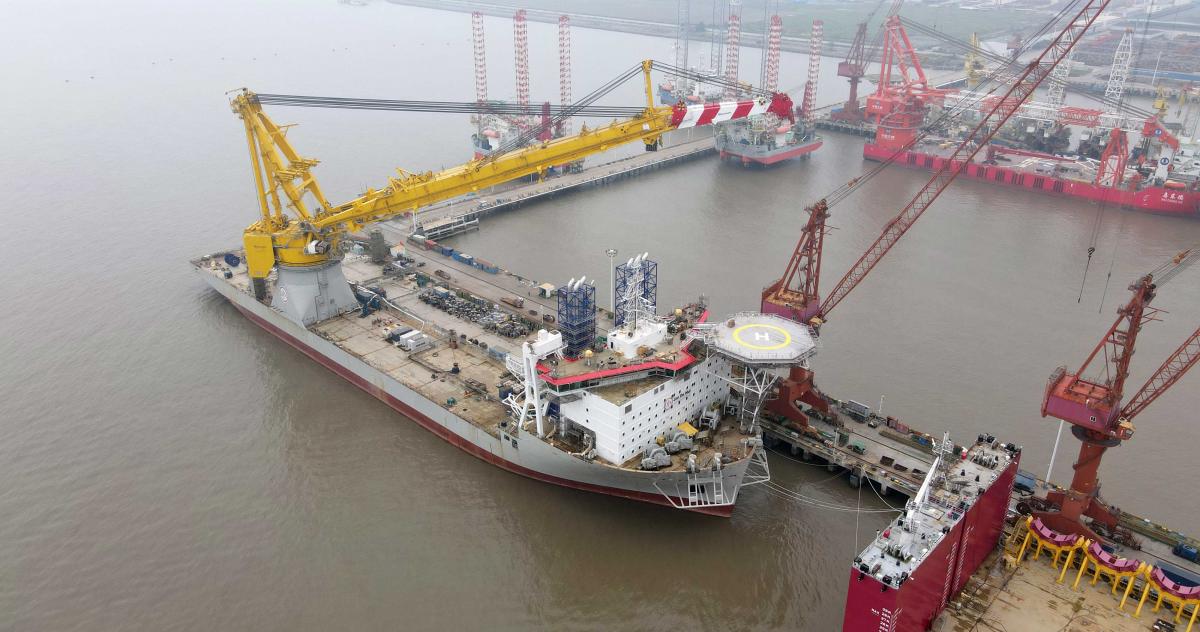
How Jan De Nul engineers are making a big difference in every respect
Helping to build the future in offshore wind power
Translation of article published in Jobat in Belgian newspapers 'De Standaard', 12.03.2022, and 'De Morgen', 15.03.2022
‘Size matters' is how you could describe the evolution of the offshore wind market in Europe. "The components used for this are many times larger than a few years ago. As a result, the existing installation vessels will soon no longer be able to install the turbines or foundations at sea", says Bart Willems, Head of Commercial Offshore Wind at Jan De Nul. "That's why we at Jan De Nul decided to be one of the first in the world to design and build a new generation of vessels."
A world first, in other words! Such a vessel sells itself, you might think. “Not quite. It is mainly the engine behind it along with motivated employees and their various competences that sell the vessel", emphasises Bart.
Eiffel tower at sea
These vessels are almost ready and are definitely something else. They really are too big to ignore. Les Alizés is the name of the floating installation vessel with a lifting capacity of up to 5,000 tonnes and a transport capacity of 61,000 tonnes. The Voltaire is a so-called jack-up vessel with a +3,000-tonne crane that uses legs at sea to lift itself out of the water and ensure a stable work platform. With its crane upright and its legs at maximum depth, the Voltaire reaches a height of 336 metres. That is as high as the Eifel tower. "Between the keel and the seabed we can bridge 98 metres, which is more than any other current vessel of its kind”, says engineer Rutger Standaert, who is coordinating the vessel's construction as Manager Vessel Construction at Jan De Nul.
How do you start building such a vessel? "The colleagues from project execution describe what the vessel should be able to do, based on the developments in the market for the coming years. It is my job to translate their requirements into a workable vessel. Then I also coordinate the construction of the vessel, in this case in China”, explains Rutger, who has been working for Jan De Nul for almost fifteen years and now with the Voltaire is realising his fourth new-build vessel. It is his job to maintain the overview. Perseverance is also a vital requirement. "You should always try to provide a solution to all parties, both in human and technical terms."
Where are the technical challenges in building such a vessel that by definition has to be right the first time? "Especially in the increase of scale," says Rutger. "Both in terms of crane and deck capacity and in terms of its operational depth. This results in very strict design requirements. The net weight you can carry for your customer plays a very big part. You really have to engineer to the limit to be able to do that efficiently”, Rutger explains. "The Voltaire can lift more than 3,000 tonnes at a time, carry 16,000 tonnes of cargo and work in water depths of up to 80 metres."
Extremely low emission
These vessels are not only innovative in terms of their capacity but also when it comes to sustainability. "For Les Alizés, for example, we use a hybrid system in the engine room based on batteries. This allows us to absorb power peaks. Both vessels are also equipped with a two-stage exhaust gas filter system and can run on biofuel", says Rutger. “We do everything possible to lower our emissions and optimise the fuel consumption.”
The newest generation of Jan De Nul vessels are all Ultra Low Emission vessels or, in short, ULEv. Their emissions are much lower than what is required by international maritime regulations.
White sheet
Of course, such a vessel is the work of a whole team: from people in charge of the electrical part and hydrodynamic design to those working at the drawing board. For these two new vessels, they almost literally started with a white sheet. Although at Jan De Nul they can fall back on their comprehensive experience with, among other things, dredgers. "My role is to design the vessel and make it as efficient as possible. Within the framework of the pre-set requirements and applicable regulations, I do have some room for manoeuvre here," says Jonas Van Leuven, senior designer at Jan De Nul, who studied electromechanical engineering and was able to familiarise himself with the matter. “The first drawings that I made for the Voltaire date from 2017", Jonas recalls. “In the nine years that I've been working at Jan De Nul, I've gained comprehensive insight into the construction of such a vessel and learned that the layout is vital to increase on-board efficiency."
What is it like, as the person who designed the vessel, to finally see the result in reality? "It is always a very special moment. Such a vessel is huge and so are its parts. When putting it to paper, it is difficult to estimate the final length of 150 metres. In reality, that is immense.”
In-house engineering
The Voltaire's first order will be the installation of turbines for the Dogger Bank A, B and C wind farms in the UK, which will be the largest offshore wind farm in the world when completed. Les Alizés will transport and install the turbine foundations for offshore wind farms Gode Wind 3 and Borkum Riffgrund 3 in Germany.
Jan De Nul really makes a difference here by designing and developing its vessels entirely in house (and within the country). "It is in our DNA and our philosophy to develop and accumulate that knowledge ourselves, which enables us to offer high-quality services to our customers", Rutger agrees. And truly everyone contributes: from HR to finance, logistics and secretariat, from ICT and execution to purchasing and engineering. "Together we make a big difference and contribute to building a sustainable future."
“It is mainly the engine behind it along with motivated employees and their various competences that sell the vessel.”
Bart Willems is Head of Commercial Offshore Wind at Jan De Nul. Every day, he is in contact with offshore clients and partners from all over the world and, together with his colleagues, carefully follows up on these commercial opportunities. Bart has been working for Jan De Nul for four years now and is very committed to help expand our offshore division. He is the man who will sell this ship to the customers.
Bart strongly believes in the power of teamwork. "You would think that this kind of ship would sell itself because of its unique character. That's not entirely true, it helps, obviously. But it is mainly the engine behind it along with motivated employees and their various competences that sell the vessel.”
"The design and placement of the various components on board is the key to the success of a vessel."
Jonas Van Leuven is Senior Designer. He studied electromechanical engineering and never thought he would find his interest and expertise in the maritime world. That’s what makes it so fascinating: Jan De Nul has so much to offer, from civil engineering over environmental techniques to maritime expertise. Jonas started for the Voltaire with a white sheet of paper and some chalk lines of existing vessels as an example. For Jonas, the Voltaire is the second new-build vessel he has put on paper.
Jonas' rule when designing a vessel is efficiency. "The design and placement of the various components on board is the key to the success of a vessel."
“Hanging in there. Moving forward is the only possible way to bring projects to a successful conclusion."
Rutger Standaert is Manager Vessel Construction at Jan De Nul. He graduated as a civil engineer in Mechanical/Electrical Engineering, Maritime Engineering. Rutger monitors the construction of the jack-up installation vessel Voltaire very closely. He is the link between the operational teams, the drawing office and the construction team in Belgium and China. He brings together the needs and requirements of these teams and tries to find the best solution to the many challenges our offshore division faces. The Voltaire is his fourth Jan De Nul new-build vessel.
Rutger's motto is to persevere. "Moving forward is the only possible way to bring projects to a successful conclusion."
The revolutionary thing about such a vessel for engineers? It is simply a challenge to get all the systems on board working together and to make it a well-functioning and commercially interesting vessel.
Rutger Standaert
Manager Vessel Construction at Jan De Nul Group
